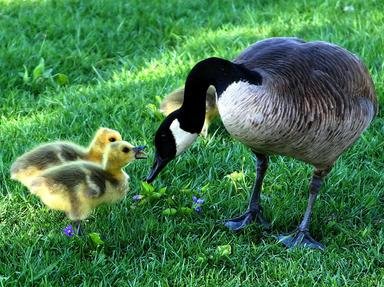Quiz Answer Key and Fun Facts
1. Black tailed prairie dogs build burrows that form colonies called which of the following?
2. Although Ord's kangaroo rat (Dipodomys ordii) is a common species in the United States, it is considered endangered in Canada.
3. The twenty-odd species of lake whitefish that may be found in freshwater lakes in Canada's prairie region are members of what family of fish?
4. The Elk Island National Park in Alberta, Canada has played a major role in the preservation of which creature that is viewed as a North American icon?
5. The Rocky Mountain bighorn sheep is the official mammal of Colorado in the United States and which westernmost of Canada's Prairie Provinces?
6. Known as the trickster in mythology, which predator's range has actually expanded as human influence has grown in the Canadian Prairie Provinces?
7. While most owls swoop silently down from the sky to capture their prey, Athene cunicularia sometimes prefers a nice run and makes the choice to chase its dinner on foot. By what name is it commonly known?
8. The southern regions of the Canadian Prairies are home to Manitoban elk. When an elk finds itself in a rut, what is happening?
9. Amongst mammals, only the cheetah is faster than the pronghorn antelope.
10. Verna's flower moth, endemic to the Prairie region in Canada, depends on which of the following for all stages of its lifecycle?
Source: Author
JCSon
This quiz was reviewed by FunTrivia editor
rossian before going online.
Any errors found in FunTrivia content are routinely corrected through our feedback system.
